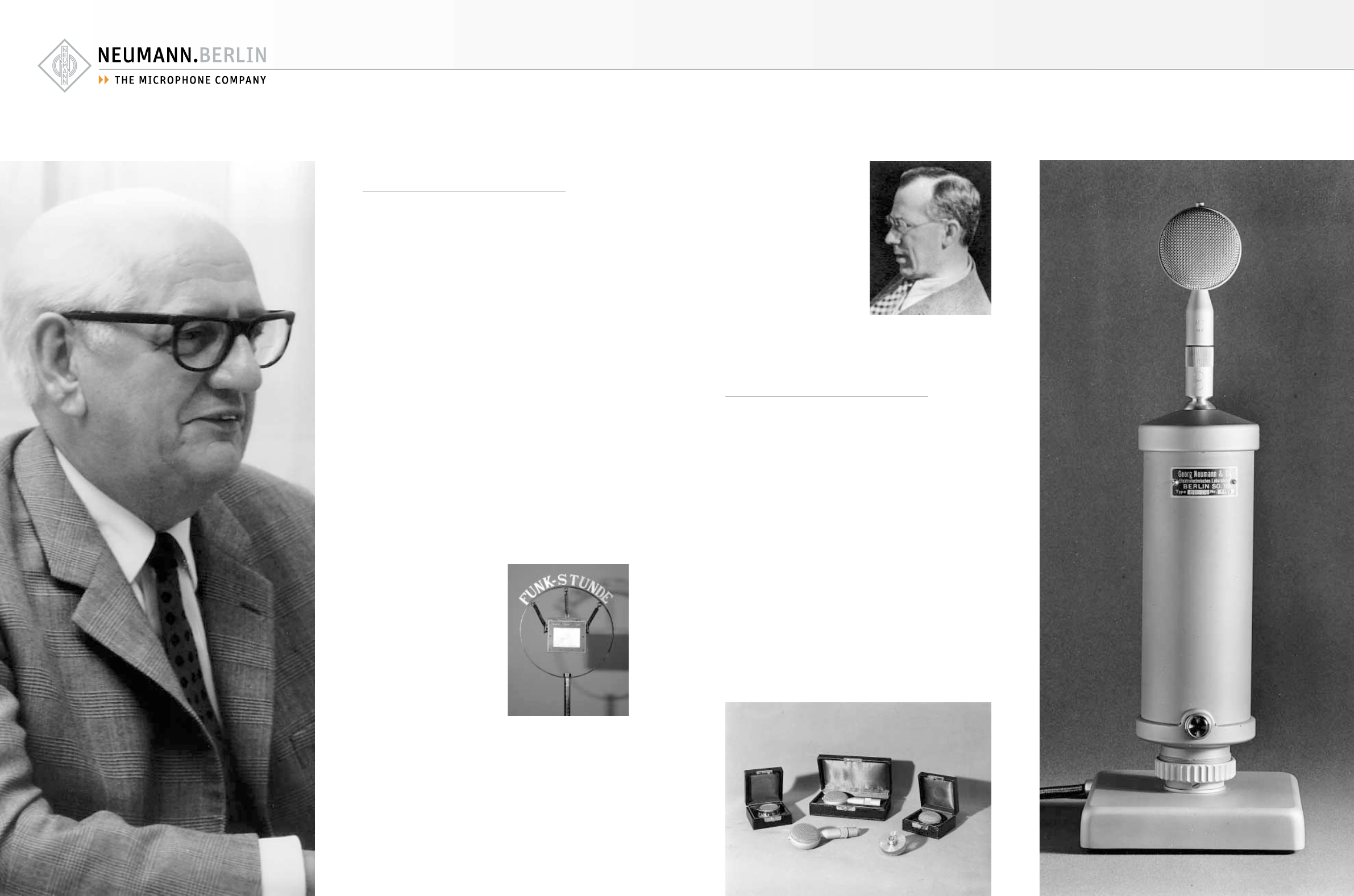
Neumann History
32
Georg Neumann –
An Inventor and His Life’s Work
Company founder Georg Neumann was born on
13 October 1898, in Chorin, some 80 km North-
east of Berlin. He received his vocational train-
ing at the firm of Mix & Genest in Berlin. Later
he worked in a research laboratory at AEG’s
Oberspree Cable Works where the focus was on
building amplifiers. Eugen Reisz was director
of this laboratory. A short while later, he found-
ed his own firm and took on Georg Neumann as
an employee.
In those days, the microphones commonly used
for sound recordings were carbon microphones.
These resembled a shoe polish tin, partially
filled with carbon grains, with openings on one
side to admit the sound. These openings were
backed by fine gauze to prevent the carbon
grains from falling out. By modern standards,
the quality of these microphones was dreadful.
The transducer principle used in these micro-
phones was also jokingly referred to as a “con-
trolled loose connection”.
Georg Neumann examined this microphone,
scattered powdered carbon on a marble slab, in-
serted two electrodes, introduced a direct cur-
rent, and spoke into this configuration. A cor-
responding response which, by Georg Neumann’s
account, was very “thin”, ema-
nated from the attached loud-
speaker.
Next Neumann stretched a rub-
ber membrane over the con-
traption, spoke into it again,
and suddenly the low frequen-
cies were there. A new micro-
phone was born, the Reisz mar-
ble block microphone.
It was into this microphone
that the first German radio sta-
tion, a Berlin station broad-
casting on the 400 m band, sounded its “first
yawp” from Vox House on Potsdamer Platz in
1923.
With a linear frequency response between
50 Hz and 1 kHz this microphone had an ex-
cess of 10 dB up to 4 kHz, which decreased to
approximately 15 dB at 10 kHz. Not quite what
we would call a studio microphone these days.
Neumann had never been one to settle for com-
promises. In and of itself, the microphone was
indeed a sensation. Consumed
by the idea of mass producing
a microphone using the capaci-
tive transducer principle, he
soon parted company with Re-
isz to found his own firm in
Berlin, together with Erich Rick-
mann, on 23 November 1928.
Since until then the only place
in which it was possible to man-
ufacture a condenser micro-
phone was in the laboratory,
his plans for industrial produc-
tion seemed rather fantastic.
The Neumann Bottle
The CMV 3 was the first ever mass produced
condenser microphone, far superior to the Re-
isz microphone, and it gained recognition un-
der the nickname of the ‘Neumann Bottle’. It
wasn’t exactly small, measuring approx. 9 cm
in diameter and approx. 40 cm in height. Its
weight of nearly 3 kg made reporting a very
strenuous job.
Telefunken, a subsidiary of AEG and Siemens,
took on the marketing rights to Neumann’s mi-
crophone.
Between 1928 and the end of World War II the
Bottle’s design remained virtually unchanged,
during which time it became firmly established
as the standard for studio use and was used ex-
tensively in the 1936 Olympic Games in Ber-
lin. At this time there existed already a selec-
tion of exchangeable capsule heads with differ-
ent polar patterns.















